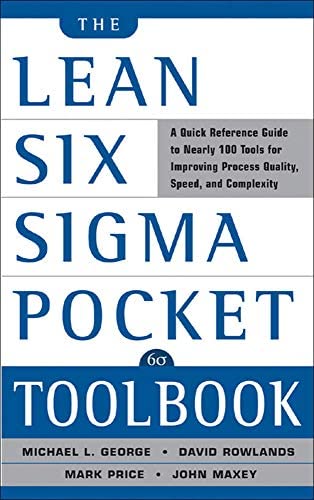Introduction
Lean Six Sigma (LSS) has long been a cornerstone of operational excellence, driving quality improvement, waste reduction, and efficiency optimization across industries. However, as organizations navigate an era of rapid technological transformation, integrating Artificial Intelligence (AI) into Lean Six Sigma methodologies presents a game-changing opportunity. The future of Lean Six Sigma lies in its synergy with AI, bridging existing skills gaps and equipping professionals with key competencies to remain competitive in a data-driven landscape.
This article explores future strategies for Lean Six Sigma with AI, identifies existing skills gaps, outlines essential competencies for Lean Six Sigma talent, and provides strategies to develop a workforce capable of leveraging AI-driven Lean Six Sigma methodologies.
In 2025, the demand for Lean Six Sigma (LSS) professionals continues to rise as organizations strive for operational excellence and data-driven decision-making. However, a significant skills gap exists, preventing many industries from fully leveraging Six Sigma methodologies. This article explores the evolving landscape of Lean Six Sigma, the critical skills required, and strategies to develop top-tier talent.

Lean Six Sigma Future Strategies with AI
The skills gap in Lean Six Sigma emerges from evolving industry demands, requiring professionals to adapt to new AI-driven methodologies. Key concerns include limited AI proficiency among Lean Six Sigma practitioners, lack of real-time data analytics skills, inadequate understanding of digital transformation strategies, and poor integration of automation tools into Lean Six Sigma frameworks. Traditional Lean Six Sigma training often focuses on manual statistical tools, leaving professionals unprepared for AI and automation-driven advancements. The rapid pace of digital transformation also contributes to the widening skills gap, as organizations increasingly adopt AI, while many Lean Six Sigma practitioners struggle to keep up with the latest developments.
Industries such as manufacturing, healthcare, supply chain and logistics, and financial services are most affected by the Lean Six Sigma skills gap. Manufacturing relies on automation and AI-driven predictive maintenance, requiring Lean Six Sigma professionals to upskill accordingly. In healthcare, AI-powered diagnostics and process optimization demand new competencies from Lean Six Sigma practitioners. Similarly, AI-driven forecasting and automation in supply chain and logistics, as well as AI-based risk management and fraud detection in financial services, necessitate an enhanced Lean Six Sigma talent pool equipped with modern technological expertise.
Key Competencies for Lean Six Sigma Talent
To remain relevant in the evolving landscape, Lean Six Sigma professionals must develop AI-driven data analysis skills, including machine learning fundamentals, big data processing using Python and R, and predictive analytics for process optimization. Digital transformation expertise is also critical, requiring practitioners to understand AI-powered statistical tools such as Minitab and JMP, incorporate RPA for automation, and leverage AI-enhanced project management tools.
Critical thinking and problem-solving remain at the heart of Lean Six Sigma, but professionals must now apply these skills in AI-powered environments. This involves identifying the root causes of inefficiencies, developing AI-powered solutions for waste reduction, and implementing continuous improvement strategies based on AI-generated insights. Additionally, interdisciplinary knowledge blending Lean Six Sigma expertise with AI-driven decision-making, financial impact analysis, and change management strategies is becoming increasingly valuable in modern organizations.
1. Statistical and Analytical Skills
- Mastery of tools like Minitab, R, and Python.
- Understanding of hypothesis testing, regression, and design of experiments.
2. Process Improvement Techniques
- Proficiency in DMAIC (Define, Measure, Analyze, Improve, Control) methodology.
- Application of Value Stream Mapping, Kaizen, and 5S principles.
3. Technology Integration
- Use of AI and automation to enhance Six Sigma efficiency.
- Implementation of IoT and digital dashboards for real-time monitoring.
4. Project Management and Leadership
- Leading cross-functional teams and driving change initiatives.
- Effective stakeholder communication and resistance management.
The Importance of Lean Six Sigma in 2025
Lean Six Sigma remains a cornerstone of process improvement, efficiency, and cost reduction. With rapid technological advancements, businesses are integrating AI, machine learning, and automation with traditional Six Sigma principles. Professionals need to adapt by acquiring hybrid skills that blend statistical analysis with digital transformation.
Identifying the Skills Gap
1. Lack of Data Analytics Proficiency
The ability to analyze large datasets is crucial for Lean Six Sigma professionals. Many struggle with statistical software, data visualization, and predictive modeling.
2. Limited Digital Transformation Knowledge
Traditional Six Sigma training often overlooks the integration of digital tools. Skills in automation, AI, and Industry 4.0 technologies are now essential.
3. Deficiency in Leadership and Change Management
Successful Lean Six Sigma projects require not just technical expertise but also leadership, communication, and stakeholder management skills.
Click here to Buy from Amazon
Strategies to Develop Lean Six Sigma Talent
1. Structured Training and Certifications
Organizations should invest in up-to-date Lean Six Sigma training that incorporates modern technological advancements.
2. Hands-on Project Experience
Providing real-world project opportunities helps professionals apply theoretical knowledge practically.
3. Mentorship and Coaching Programs
Senior Six Sigma experts should mentor emerging professionals to bridge knowledge gaps.
4. Leveraging Online Learning Platforms
Coursera, Udemy, and MIT OpenCourseWare offer accessible Six Sigma courses tailored for different expertise levels.
5. Industry Collaboration and Networking
Participating in Lean Six Sigma conferences, webinars, and forums fosters continuous learning and networking.

Emerging Trends in Lean Six Sigma Talent Development
1. AI-Powered Process Optimization
AI is enhancing root cause analysis, predictive maintenance, and automation within Six Sigma methodologies.
2. Gamification in Training
Interactive simulations and gamified learning modules make Six Sigma training more engaging and effective.
3. Remote and Hybrid Work Adaptations
Lean Six Sigma is evolving to accommodate remote collaboration, leveraging cloud-based project tracking tools.
4. Cross-Disciplinary Learning
Professionals are now combining Six Sigma with Agile, DevOps, and Design Thinking for enhanced efficiency.
Click here to Buy from Amazon
Case Studies: Successful Lean Six Sigma Talent Development
Case Study 1: Manufacturing Industry
A leading automotive company integrated AI-driven Six Sigma training, reducing defects by 30% within a year.
Case Study 2: Healthcare Sector
Hospitals utilizing Lean Six Sigma reduced patient wait times by 40% by implementing automated data-driven decision-making.
Case Study 3: IT and Software Development
Tech firms have adopted Lean Six Sigma alongside Agile methodologies, improving software quality and delivery speed.
Conclusion
Bridging the Lean Six Sigma skills gap in 2025 requires a multifaceted approach that combines traditional process improvement with digital transformation, leadership training, and hands-on experience. Organizations must proactively upskill their workforce to remain competitive in an increasingly data-driven world.
By fostering a culture of continuous learning and integrating emerging technologies, businesses can develop highly skilled Lean Six Sigma professionals who drive efficiency, innovation, and excellence.
I hope this blog helped in understanding the basic concept in a simplified manner, watch out for more such stuff in the future.
📢📢 𝑺𝒐𝒄𝒊𝒂𝒍 𝑴𝒆𝒅𝒊𝒂 𝑳𝒊𝒏𝒌:
Thanks!!!
For questions please leave them in the comment box below and I’ll do my best to get back to those in a timely fashion. And remember to subscribe to Digital eLearning YouTube channel to have our latest videos sent to you while you sleep.
✍️ 𝓓𝓲𝓼𝓬𝓵𝓪𝓲𝓶𝓮𝓻: Copyright Disclaimer under section 107 of the Copyright Act of 1976, allowance is made for “fair use” for purposes such as criticism, comment, news reporting, teaching, scholarship, education and research. Fair use is a use permitted by copyright statute that might otherwise be infringing. The information







